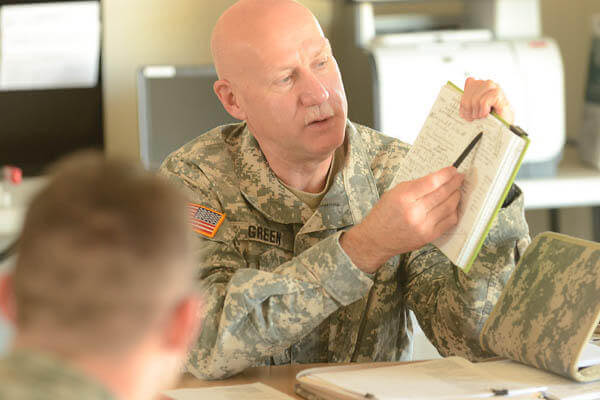The job description is a useful tool to articulate the how, what, when, and where of an open position. A thorough job description will outline working conditions, candidate expectations, and list requirements such as credentials, certifications and skills needed to perform the functions adequately. Typically, hiring managers also include an overview of the company, its mission, and business goals in outlining the required talents being sought.
If you and your company seek to recruit military veteran job candidates, the traditional job description may need to be modified to attract this workforce.
What Veterans Look For
When considering jobs after uniformed military service, veterans often say they evaluate the "what" of the company (people, products and work style) as well as the "why" (purpose and vision). Veterans are accustomed to aligning their personal values, beliefs, ethics and goals with the mission at hand, and many veterans find it challenging to identify companies that align their business goals and processes with their stated values.
Veterans also look for people, work and processes that are familiar. When a veteran job candidate sees a fellow soldier on a brochure or in the job interview, there is an instant recognition of shared service. This is not only reassuring, but confirming of the company's claim to hire veterans. Similarly, when tasks, systems and programs are outlined using terms or language the veteran is familiar with, it creates ease and confidence in the veteran's ability to do the job.
What to Include in Your Job Description
To appeal to a veteran workforce, job descriptions need to include:
- Relatable language. If you are unsure how skills translate from military to civilian work, consider using a skills translator, such as the Military Skills Translator on Military.com. Translators allow you to enter a civilian skill and search databases of thousands of military equivalents. Then, using language that appeals to the veteran, you can position the skills you seek, and describe the skills other employees possess have who are successful in similar jobs.
- Clear description of responsibilities. Remember that for the recently separated service member, civilian job responsibilities are not familiar. The more clearly you can spell out what the job entails, how performance is evaluated, what procedures are in place, and the systems by which they will be measured, the better you can set expectations with veteran candidates.
- Work with military agencies. Does your company contract with the government or the military? This can be an attractive feature for a veteran who wants to leverage their military skills and training into their civilian career.
- Opportunities to serve. If this job includes the chance to mentor others, or be mentored, or provides the candidate with other ways to help or assist people, highlight that in the job description. Veterans are service-oriented and will be attracted to an opportunity to help others.
- Commitment to veterans. If your company has a demonstrated commitment to hire veterans, be sure to describe that. Outline programs or initiatives you've developed to hire and grow veteran talent, or serve veterans in your community. Consider putting the information about a veteran leader in your company in the job description to make that personal connection with applicants.
Veterans offer a unique and capable workforce that is highly sought-after by companies who recognize their value. Small modifications to job descriptions and other talent sourcing tools provide huge dividends in attracting qualified applicants, particularly military veterans.
Lida Citroën, a branding expert based in Denver, has made a career of helping people and companies create new or enhanced identities. She is passionate about helping veterans learn how to compete for careers in the civilian sector. A TEDx Speaker, Lida presents her unique personal branding training programs across the U.S., at military installations and events, serves on the Board of Directors of NAVSO volunteers with ESGR, and has produced numerous programs and materials to help military veterans successfully transition after service. If you have a transition question Lida can help answer, email her at lida@lida360.com. She is also the author of the best selling book, "Your Next Mission: A personal branding guide for the military-to-civilian transition," available at www.YourNextMissionBook.com and on Amazon.





